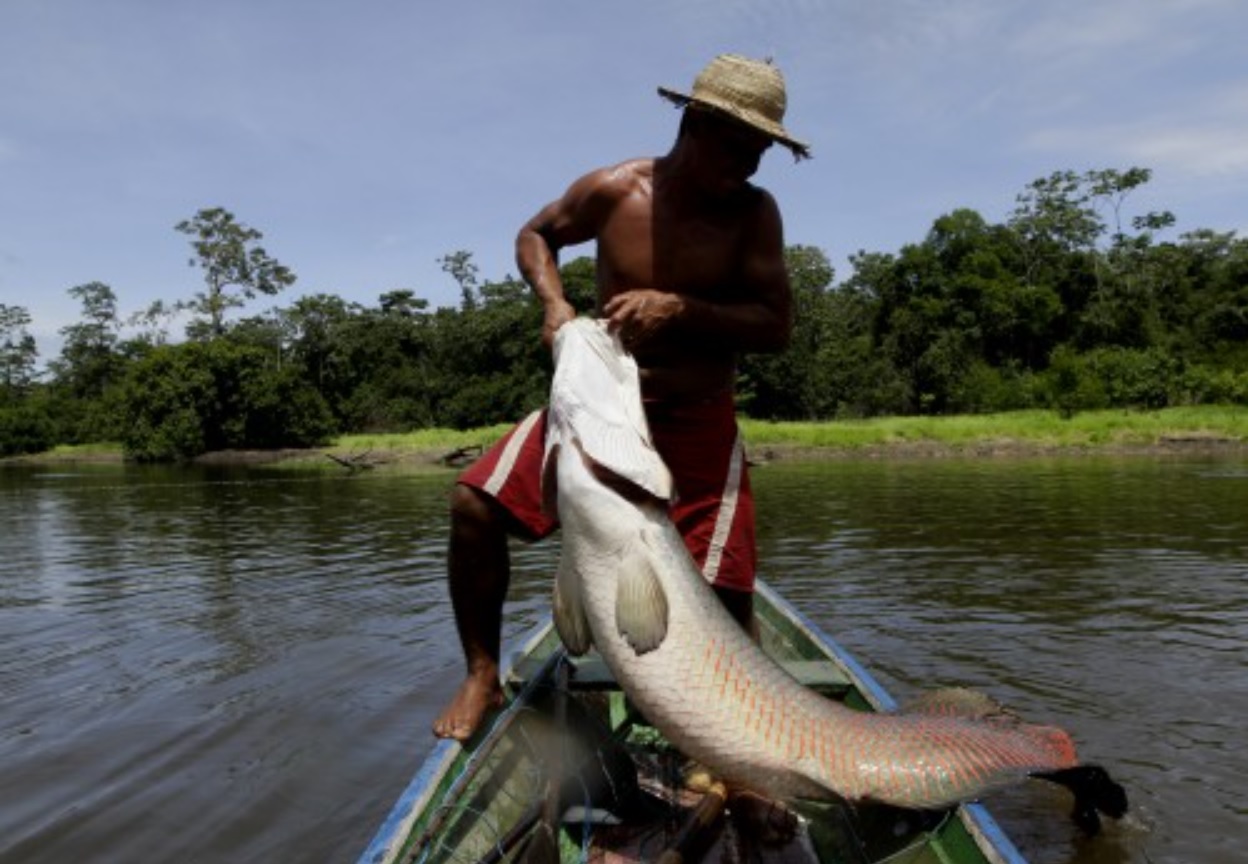

Foto: Ricardo Oliveira, SEMA/MA


The pirarucu, a big fish native to the Amazon (adults in the wild can grow to a whopping 450 pounds), was highlighted as an under-exploited symbol of sustainable development in Brazilian Amazon. According to an article published today in Americas Quarterly, the prevailing sentiment in the region is that the fishing industry could be worth more than the 2.7 million reais, or roughly $500,000, it currently generates per year for area fishermen.
Wild-caught pirarucu is especially sought after by United States, China, Europe and Saudi Arabia buyers. But fishing collectives throughout the Amazon face numerous bottlenecks, from the region’s notoriously unreliable river-based transportation system to a lack of proper refrigeration equipment and continued high spending on security to chase away illegal miners, loggers and others who would destroy the fish’s habitat.
The article was written by Beto Veríssimo, co-founder of Imazon, Juliano J. Assunção, executive director of the Climate Policy Initiative in Brazil, Brian Winter, editor-in-chief of Americas Quarterly and Cecilia Tornaghi, managing editor at Americas Quarterly.
Tap here to read
Full magazine
This post was published on 12 de May de 2021
States with the most deforestation in January were Mato Grosso, Roraima and Pará Deforestation…
According to the Green Radar report, in 2024, out of the 146 companies assessed, 6…
A survey of more than 3,500 lawsuits showed an increase in punishments, while payment of…
A group made up of specialists from 23 different professions trained in the Sustainable Amazon…
The degraded area increased due to burning, especially in August and September In 2024,…
The program is scheduled to last 15 years and will include local indigenous peoples and…